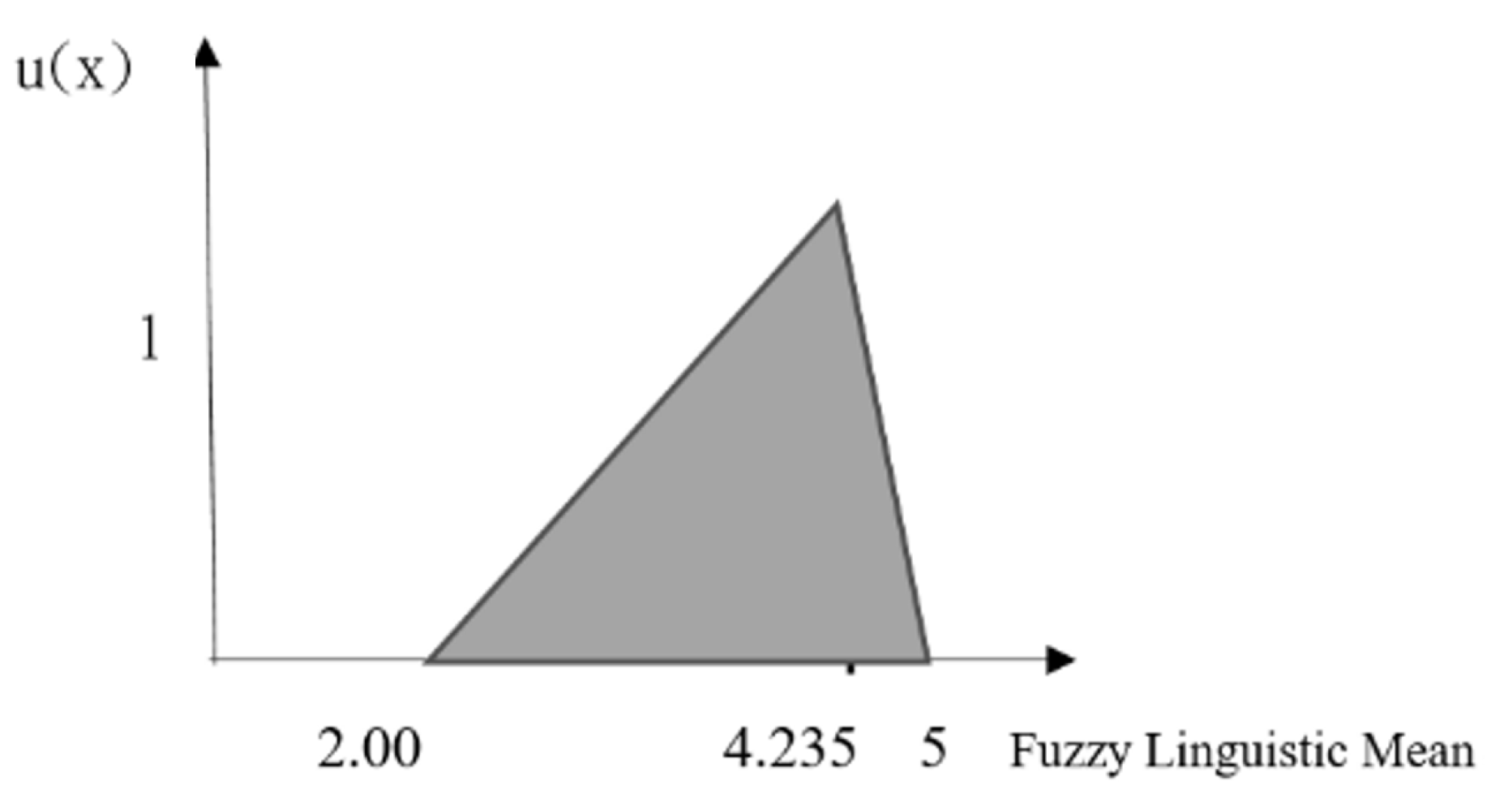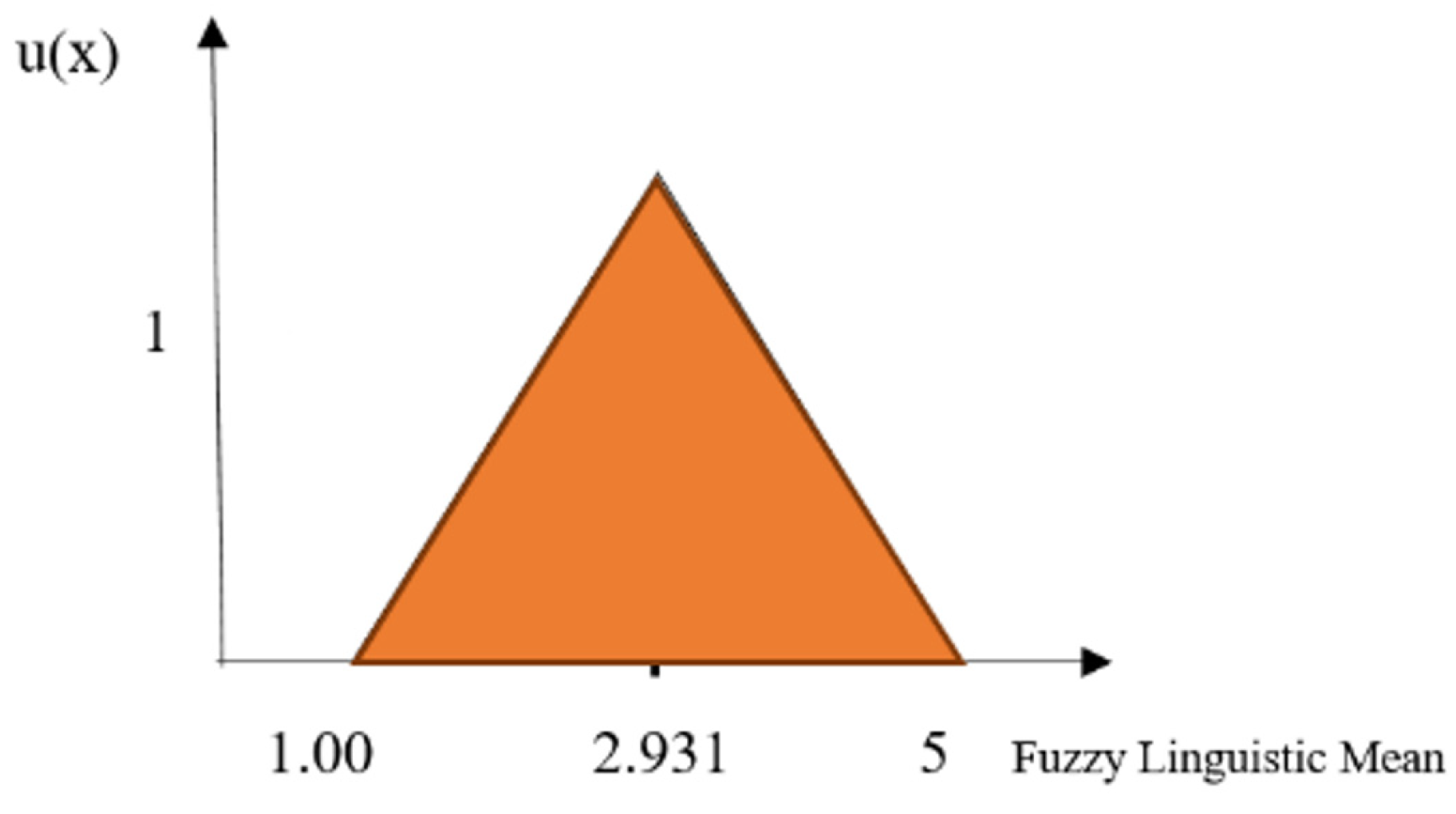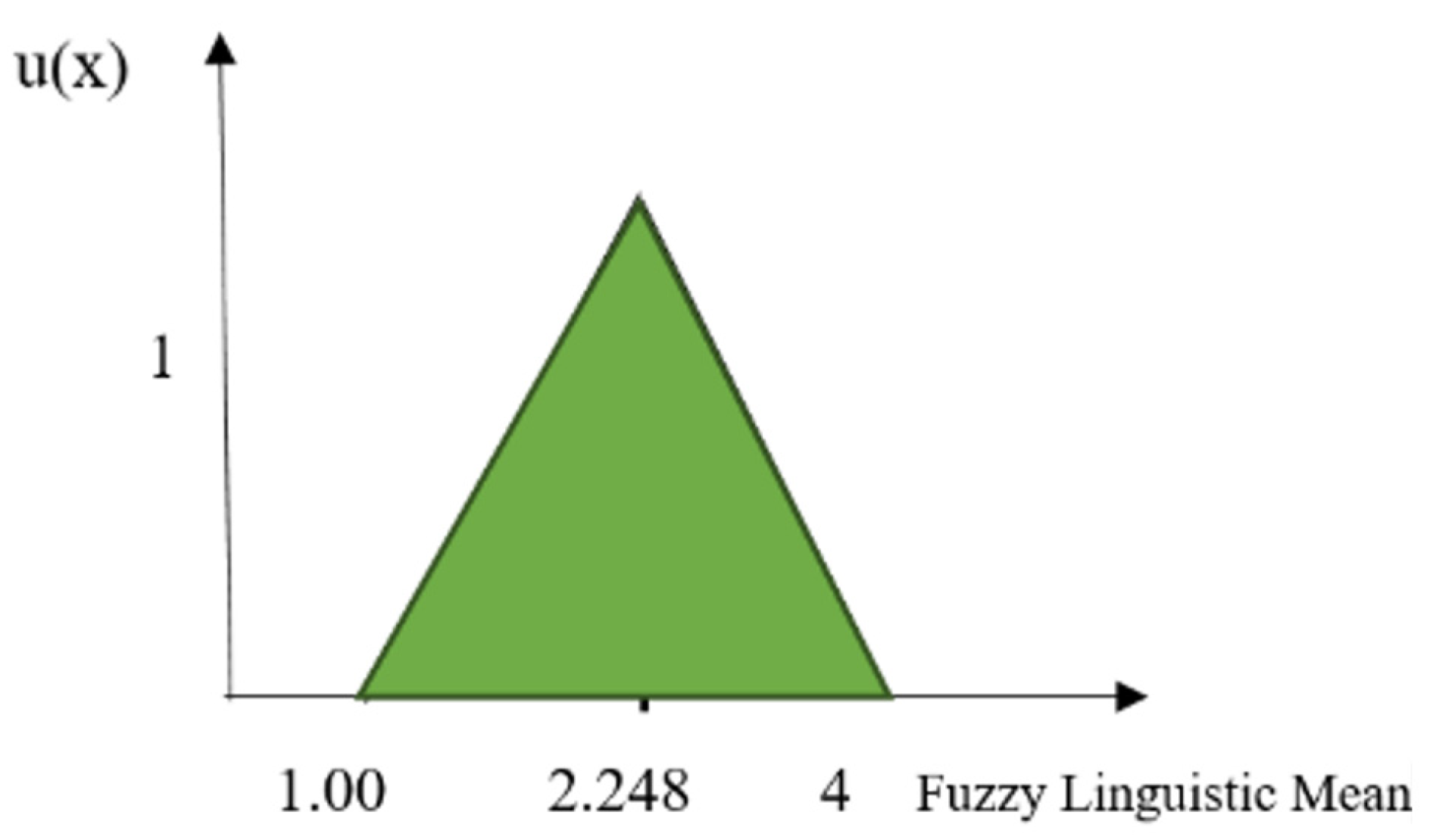Investigation of Relationship between Kansei Design Elements of Taiwanese Wooden Furniture and Consumer Demand by Fuzzy Theory †
Abstract
1. Introduction
2. Literature Review
2.1. Wooden Furniture
2.2. Consumer Demand
2.3. Kansei Engineering
2.4. Fuzzy Theory
3. Research Methodology
4. Data Analysis
5. Conclusions and Suggestions
Funding
Institutional Review Board Statement
Informed Consent Statement
Data Availability Statement
Acknowledgments
Conflicts of Interest
References
- Wang, L.C.; Guan, S.S.; Chen, T.L. A Study on Image and Status Survey of Taiwan Wooden Furniture Industry. J. Des. Res. 2011, 4, 16–32. [Google Scholar]
- Current Situation of Taiwan Furniture Industry. Available online: http://www.interwood.tw/industryNewsContent.php?ID=838andln=twzh (accessed on 12 May 2023).
- Hsiao, K.A. The Affective Images between Shapes and Materials. Kaohsiung Norm. Univ. J. Sci. Technol. 2018, 45, 21–42. [Google Scholar]
- McKellar, P. The Investigation of Mental Images; Penguin Science Survey: Harmondsworth, UK, 2006. [Google Scholar]
- Wang, L.C. A Study on Design Image Analysis of Taiwan Furniture Cultural and Creative Brands. J. Des. Res. 2018, 11, 37–55. [Google Scholar]
- Chen, M.; Lyu, J.H.; Li, S.G.; Wu, X. Construction and implementation of a panel furniture design evaluation system at the design stage. Adv. Mech. Eng. 2017, 9, 1–8. [Google Scholar] [CrossRef]
- Roper Green Gauge Report Summary Brochure. Available online: http://www.scjohnson.com/Libraries/Download_Documents/SCJ_and_GfK_Roper_Green_Gauge.sflb.ashx (accessed on 12 May 2023).
- Fong, W.C.; Chen, T.L. The Influences of the Bauhaus style on Furniture Design in Taiwan: Using the Furniture Brand “TW.U.C.M.” as an Example. Int. J. Des. 2019, 24, 17–40. [Google Scholar]
- Liu, S.N.; Chu, W.C. A Study on Customers’ Recognition and Demand for Aromatheraphy. J. Beauty Technol. 2009, 6, 43–61. [Google Scholar]
- Sheth, J.N.; Newman, B.I.; Gross, B.L. Consumption values and market choice: Theory and application. J. Mark. Res. 1991, 29, 487–489. [Google Scholar]
- Chen, K.S. Kansei Engineering. Qual. Mon. 2009, 45, 21–22. [Google Scholar]
- Chen, K.S.; Guan, S.S.; Deng, Y.S.; Chang, Y.M. Kansei Engineering—A Method of Rationalizing Sensibility. Ind. Des. 2001, 29, 2–16. [Google Scholar]
- Yanfeng, M.; Huiyuan, G. Research on Visual Characteristics about Wood Mountain Peak Texture Based on Kansei Engineering. Furnit. Inter. Des. 2013, 58–60. (In Chinese) [Google Scholar]
- Akiyama, A.; Araki, Y.; Hosoya, S. Research into the Relationship between Floor Materials and Living Spaces as Revealed by KANSEI Evaluations. Int. J. Affect. Eng. 2017, 16, 113–120. [Google Scholar] [CrossRef]
- Kim, W.; Ko, T.; Rhiu, I.; Yun, M.H. Mining affective experience for a Kansei/affective design study on a recliner. Appl. Ergon. 2019, 74, 145–153. [Google Scholar] [CrossRef] [PubMed]
- Zadeh, L.A. Fuzzy sets. Inf. Control 1965, 8, 338–353. [Google Scholar] [CrossRef]
- Chen, W.L.; Chen, T.H. Applying Fuzzy Theory for Design Evaluation of the Gentleman Fashion Design—A Case Study on POLO Shirts. Taiwan Text. Res. J. 2016, 20, 64–73. [Google Scholar]
- Chen, W.L.; Lin, J.J.; Shen, M.C.; Chang, S.M. A Study on the Relationship between Product Form and Image Perception for Personal Digital Assistant. J. Prof. Mech. Eng. 2008, 1, 38–45. [Google Scholar]
- Guo, F.; Qu, Q.X.; Nagamachi, M.; Duffy, V.G. A proposal of the event-related potential method to effectively identify Kansei words for assessing product design features in Kansei engineering research. Int. J. Ind. Ergon. 2020, 76, 102940. [Google Scholar] [CrossRef]
- Wan, Q.; Li, X.; Zhang, Y.; Song, S.; Ke, Q. Visual perception of different wood surfaces: An event-related potentials study. Ann. For. Sci. 2021, 78, 25. [Google Scholar] [CrossRef]
- Mortenson, M.E. Geometric Modeling; John Wiley and Sons: New York, NY, USA, 1985; pp. 450–451. [Google Scholar]
- Maslow, A.H. A theory of human motivation. Psychol. Rev. 1943, 50, 370. [Google Scholar] [CrossRef]
- Chen, T.Y.; Wu, C.H.; Chen, Y.M. A Maslow’s Hierarchy of Needs-based Networking Reviews Analysis Mechanism for Product Positioning. J. e-Bus. 2015, 17, 393–422. [Google Scholar]
- Klir, G.J.; Yuan, B. Fuzzy Sets and Fuzzy Logic: Theory and Application; Prentice Hall: Hoboken, NJ, USA, 1995. [Google Scholar]




| N | Minimum | Maximum | Sum | Mean | Standard Deviation | ||
|---|---|---|---|---|---|---|---|
| 6-4 Consumers’ affective perception and opinion of a round seat shape. [Novel] | 102 | 1.0 | 4.0 | 233.0 | 2.284 | 0.0716 | 0.7227 |
| 6-2 Consumers’ affective perception and opinion of a round seat shape. [Honorable] | 102 | 1.0 | 5.0 | 260.0 | 2.549 | 0.0820 | 0.8281 |
| 6-6 Consumers’ affective perception and opinion of a round seat shape. [Fashionable] | 102 | 1.0 | 5.0 | 261.0 | 2.559 | 0.0819 | 0.8274 |
| 6-3 Consumers’ affective perception and opinion of a round seat shape. [Playful] | 102 | 1.0 | 5.0 | 296.0 | 2.902 | 0.0898 | 0.9066 |
| 8-9 Consumers’ affective perception and opinion of a rectangular seat shape. [Elegant] | 102 | 1.0 | 5.0 | 299.0 | 2.931 | 0.0851 | 0.8590 |
| 7-6 Consumers’ affective perception and opinion of a square seat shape. [Fashionable] | 102 | 1.0 | 5.0 | 301.0 | 2.951 | 0.0949 | 0.9583 |
| 6-10 Consumers’ affective perception and opinion of a round seat shape. [Relaxed] | 102 | 1.0 | 5.0 | 391.0 | 3.833 | 0.0925 | 0.9343 |
| 8-8 Consumers’ affective perception and opinion of a rectangular seat shape. [Sturdy] | 102 | 2.0 | 5.0 | 407.0 | 3.990 | 0.0830 | 0.8384 |
| 6-8 Consumers’ affective perception and opinion of a round seat shape. [Sturdy] | 102 | 2.0 | 5.0 | 432.0 | 4.235 | 0.0699 | 0.7061 |
Disclaimer/Publisher’s Note: The statements, opinions and data contained in all publications are solely those of the individual author(s) and contributor(s) and not of MDPI and/or the editor(s). MDPI and/or the editor(s) disclaim responsibility for any injury to people or property resulting from any ideas, methods, instructions or products referred to in the content. |
© 2023 by the author. Licensee MDPI, Basel, Switzerland. This article is an open access article distributed under the terms and conditions of the Creative Commons Attribution (CC BY) license (https://creativecommons.org/licenses/by/4.0/).
Share and Cite
Lee, A.-S. Investigation of Relationship between Kansei Design Elements of Taiwanese Wooden Furniture and Consumer Demand by Fuzzy Theory. Eng. Proc. 2023, 38, 64. https://doi.org/10.3390/engproc2023038064
Lee A-S. Investigation of Relationship between Kansei Design Elements of Taiwanese Wooden Furniture and Consumer Demand by Fuzzy Theory. Engineering Proceedings. 2023; 38(1):64. https://doi.org/10.3390/engproc2023038064
Chicago/Turabian StyleLee, An-Sheng. 2023. "Investigation of Relationship between Kansei Design Elements of Taiwanese Wooden Furniture and Consumer Demand by Fuzzy Theory" Engineering Proceedings 38, no. 1: 64. https://doi.org/10.3390/engproc2023038064
APA StyleLee, A.-S. (2023). Investigation of Relationship between Kansei Design Elements of Taiwanese Wooden Furniture and Consumer Demand by Fuzzy Theory. Engineering Proceedings, 38(1), 64. https://doi.org/10.3390/engproc2023038064






